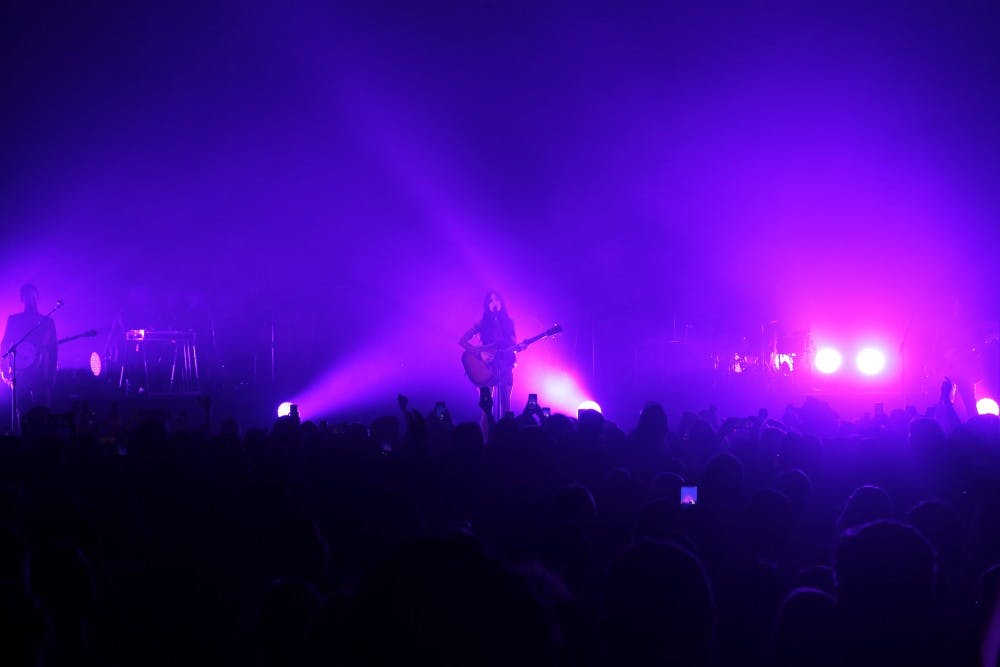Two years ago at this time, the Metropolitan Opera House lay derelict at the corner of Broad and Poplar. Last year, it was preparing for Bob Dylan, the first concert in the renovated building. Today, there are events four or five times a week, from orchestral concerts to sold–out performances from Sara Bareilles and Steely Dan. How did the Met go from an abandoned building to a major force in the Philly music scene, all in less than one calendar year?
Impresario Oscar Hammerstein opened the Philadelphia Opera House in 1908, only for his son to sell the venue to the New York two years later, where it was rechristened the Metropolitan. Although the name never changed, the building was first an opera house, then a cinema, a ballroom, and a gymnasium, before it was sold to Reverend Theo James in 1954. While the Philadelphia Orchestra used the venue's acoustics for recordings, it primarily existed as a church, and when membership declined and the building deteriorated, the Met fell into disrepair in 1988.
Church leaders worked on the building throughout the end of the 20th century, pressed by city building authorities who threatened to demolish the Met in 1996, but it remained unused. Developer Eric Blumenfeld promised to restore the Met to its former glory, and was sued in 2015 by Holy Ghost Headquarters Church for failing to deliver on that promise. It was only in 2017, when Live Nation signed a lease with Blumenfeld and the church, that the Met could begin its new life as a modern concert venue, beginning with a performance by Bob Dylan in December of 2018.
Every good concert venue needs two things: a place to hold a show, and an artist to perform. An immediate boost to the Met’s popularity was the announcement back in March that Festival Pier at Penn’s Landing, a premiere source for outdoor summer concerts, would be going on “sabbatical” for the summer of 2019. Bands that normally would have graced the outdoor stage, such as Jason Isbell, Kacey Musgraves, or Flogging Molly and Social Distortion’s co–headlining show, had to relocate. Coheed and Cambria went to BB&T, a few bands stayed outdoors at the Skyline Stage at the Mann, but most chose the Met.

The Met fills a niche that the Philly concert scene has been lacking for some time: a large venue (3,500 capacity) that is, outside of a small pit, mostly seated. Smaller venues like Union Transfer and TLA cater to up–and–coming acts like grandson, or niche bands like La Dispute. Larger general admission venues such as the Fillmore and Franklin Music Hall attract bands with cult followings like Streetlight Manifesto or Daniel Caesar. For artists that generate mass appeal, like Ed Sheeran and Taylor Swift, Wells Fargo Center is the most attractive option. But, there needs to be a space between stadiums and more intimate venues, for acts like Hozier and Sting with mainstream appeal whose music and aesthetics are unsuited for the theatrics of a stadium tour.
Wells Fargo Center itself has one major detriment: during the winter months, both the Sixers and Flyers play at the stadium regularly, leaving only a few days a month available for music performances. The only obligation the Met has is to provide music and the arts to Philly, and they can fill their calendar on concerts and other music events. This fact has led to another Met–specific phenomenon: hosting multiple performances by the same artist.
It’s not uncommon for a band to do two performances in one tour stop when the first show sells out. The Mountain Goats did it this summer at Union Transfer, and Dashboard Confessional prepared by planning two TLA shows in March, both of which sold out almost at once. Yet a staple of the Met seems to be the repeat performance: Sara Bareilles, Hozier, Pentatonix, and Greta Van Fleet are all doing two shows this fall. Steely Dan is doing three performances at the start of November, all with different sets, and Madonna's Madame X tour has four performances between Dec. 7 and 11.

The Head and the Heart at The Met Philly
There is a difference between a band adding a second show due to increased demand and pre–planning two dates in the same venue. Pre–planning allows for flexibility in concert–goers' schedules . Incubus, for instance, did a Saturday and a Monday show at the start of October, so someone who was busy on one of those two days could attend the other. The diehard fans with money to spare can attend both shows, adding to the number of times they can say they’ve seen their favorite band.
In a city like Philly, known for both its strong music scene and for a loyalty to historic buildings, opening a new venue can be difficult. While the Met reopened with fortuitous timing, capitalizing on the closing of Festival Pier, it will have to continue to draw in big names and large crowds in the coming years to retain its hold on the scene. By offering a venue larger than the Fillmore but smaller than Wells Fargo Center, and making a trend out of artists performing multiple nights per tour, the venue has found a profitable niche that it can and should expand upon, not just justifying but necessitating its presence.







